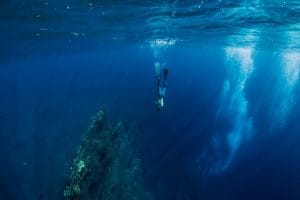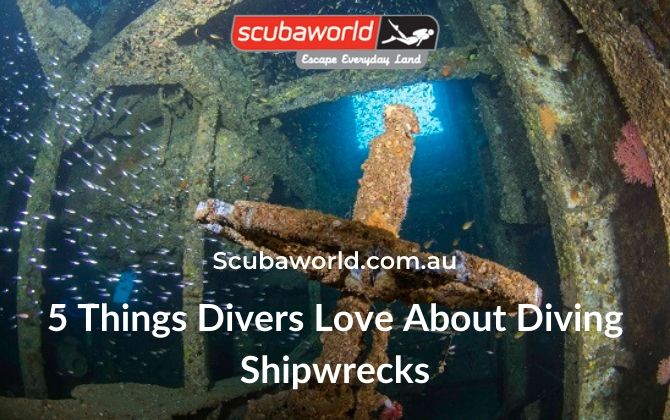
Why Scuba Divers Should Try Freediving: A Personal Perspective from an Scuba diving and Freediving Instructor
Hey everyone, I’m Matt, co-director of OceanSense Freediving here on the Sunny Coast. Over the

Diving is always exciting. With every adventure beneath the waves, you encounter a brand new seascape, just waiting to be explored. Diving shipwrecks, however, offers a particularly unique experience that you can’t get anywhere else.
Here are some things people love about them.
While some shipwrecks lie at the bottom of the deep ocean, the majority are close to shore. In the past, captains would typically get lost in choppy seas and scuttle their vessels on sharp rocks along the coast, often close to the port. Many ships sunk during wartime were also often close to ports as this is where they spent most of their time.
For divers, wrecks close to the shore are an opportunity. Not only does being close to shore make them more accessible, but it also means that you don’t need to dive as deep to reach them. Wrecks on the continental shelf tend to be much closer to the surface than those stuck on the bottom of the deep ocean.
With divers increasingly concerned about the plight of coral reefs around the world, many are looking for more sustainable ways to enjoy their hobby. It turns out that shipwrecks are ideal in this regard.
Corals and other ocean communities can’t form naturally on the seafloor. Usually, they need some kind of rocky outcrop to use as a scaffold to get going. Once the organisms that make the reef take root, they can build shelves that support the complex ecosystems that emerge on top of them. Shipwrecks, therefore, provide a backbone that new reefs can use to get started. Spores passing by on ocean currents attach themselves on the ship’s hull and then use nutrients in the surrounding water to grow and multiply. Over time, entire colonies can form.
Wrecks, therefore, make things more interesting for divers. They support colonies of thousands of species and create beautiful landscapes.
Exploration is always more enjoyable when your target object has a history, and for divers, shipwrecks are no exception.
Rarely do you find a hull lying on the seabed that doesn’t have an epic tale to tell. Some ships sank to the briny depths when their captains lost their way during a storm, others to enemy torpedos during wartime. HMS Brisbane, for instance, went to the bottom after being decommissioned and scuttled.
Brave divers sometimes make their way inside wrecks to view the original cabins and living quarters of the crew. While it can be an eerie and dangerous experience, it is also highly rewarding. Divers get to see the kind of conditions in which shipmates would have lived, worked and fought. Ships on the seafloor are a window into the past and a living museum, ravaged by the passing of time.
While the natural world has its delights, nothing is quite like descending into the depths and exploring a wreck. The man-made nature of the objects means that you regularly encounter the unexpected. You’re not just exploring another reef or embankment; you’re exploring a centuries-old ship that represents a different time and era.
Some shipwrecks are, to this day, unidentified, meaning that divers don’t always know what they are exploring ahead of time. The experience adds mystery and means that those who dive beneath the waves can often make discoveries.
Deep shipwrecks are particularly alluring. In many cases, nobody has ever been down to them before. When a diver sets eyes on the wreck, it is often the first time that anyone has seen it since it sunk to the bottom. What’s more, there’s a small chance that you could uncover lost treasure.
Divers are always looking for new opportunities to advance their skills, but in open water, there’s only so much that you can learn. Shipwrecks, by contrast, are much more complex marine environments.
When diving a wreck, divers can step inside a fully-enclosed structure while underwater – something that would never ordinarily happen in most scuba situations. Once onboard, you can explore the entire ship, from the mess room to the living quarters, kitchen and storage spaces.
Large shipwrecks in calm, shallow waters, also provide ample opportunities for amateur divers to hone their scuba diving skills. Ships offer an environment that is almost tailor-made for coaching divers with a range of ability levels, from beginner to advanced. People can advance rapidly with proper instruction and an amenable underwater environment.
So there you have it: five things divers love about shipwrecks.

Hey everyone, I’m Matt, co-director of OceanSense Freediving here on the Sunny Coast. Over the
Join us Thursday 30th Jan at 5:30pm to hear David Mullins talk about nudibranch defences
Dear members, I would like to take this opportunity to inform you about a few